Bark River Knives new Skinner is a classic design made with modern materials.
It works really, really well.
by Leon Pantenburg
Disclaimer: I bought this knife to field test. DLT Trading is a Survival Common Sense affiliate. Nobody had any input in this review, and these opinions are mine. All we ever promise in a review is a fair shake.
The best place to field test a skinning knife is at the skinning rack of a deer camp. My first cousin, Marion Fitzgerald, had just tagged a four-point Mississippi buck, and we put the BR Skinner to use. It was a classic test of a classic knife.
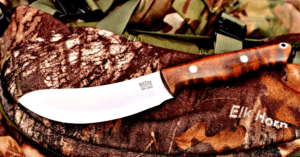
The Bark River Skinner design is a classic because the blade and handle combination works.
There is a good reason some blade designs are timeless – they just flat-out work. The new Bark River Skinner , exclusive to DLT Trading, is a knife with a design that goes way back.
A skinning knife is a specialized tool, specifically designed to separate the hide from a large animal. As such, it has a thin, curved blade and a generous-sized handle.
The point is not a major part of the design, since this is a tool that generally won’t be used for piercing. The design probably goes back to the discovery of steel. Some hunter/gatherer probably noticed that the curved knife worked really well for taking the hide off large animals.
I ordered a Skinner as soon as one came on the market.
Here are the specs (Courtesy of DLT Trading)
- SPECS:
- Overall Length: 8.875″
- Blade Length: 4.375″
- Blade Thickness: .093″
- Handle Thickness: .85″
- Tang: Full
- Blade Style: Skinner
- Blade Steel: S45VN
- Weight: 4.66 oz
- Country of Origin: USA
I first noticed this design in the knife my mom used for virtually everything, from butchering chickens, to chopping vegetables for canning, to general kitchen work. Mom’s knife was a handmade butcher knife. It was hand-forged by my great-uncle John Wirth (from steel from a Model T bumper) for his brother, my grandpa Leo Wirth, a farmer and part-time butcher.
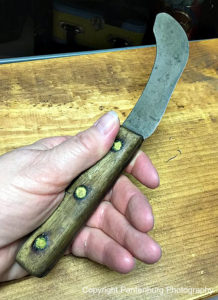
Leo’s butcher knife is a treasured heirloom that my sister Karla still uses.
The knife was one of Leo’s skinning knives and it was used on countless cattle, pigs, goats and sheep. Today, that knife is in my sister Karla Pantenburg Moore’s possession, and she’s not letting go of it. Karla regularly uses the knife in her kitchen.
The BR Skinner proved to be a very useful knife that made skinning Marion’s buck easy
The good stuff:
Blade thickness: At .093 inches, the BR Skinner is a thin blade that is just what a skinning knife needs. Thank you Bark River, for making a user knife with a practical, useful blade thickness! The thickness makes slicing meat easy.
Point: The BR Skinner appears to be an upswept, rounded tip. My grandfather’s skinning knife in the photo appears to have a similar tip configuration.
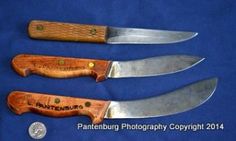
The bottom two knives are replicas of classic butcher knives. The belly curve on both is similar to the BR Skinner.
The rounded tip might allow the user to place the blade spine down to make the initial cut that opens up the abdomen without piercing the entrails.
Several years ago, I gutted an Idaho mule deer with my brother’s skinning knife because my Cold Steel SRK was three miles away. A skinning knife would not be my first choice for gutting a big animal, but it would work.
Steel: S45VN is a new powder metallurgy stainless steel being produced by Crucible. Vanadium forms very hard carbides which contribute to wear resistance, and the use of powder metallurgy keeps the carbide size small for good toughness. I haven’t used S45VN before, but my most-used knife, the Bark River Sportsman has S35VN steel, and I like it very much.
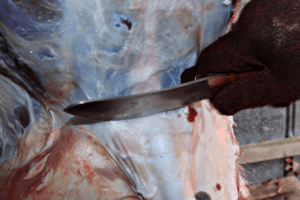
The BR Skinner worked well for its intended purpose.
Is S45VN better than S35VN? Yes, according to knifesteelnerds.com, but there’s not a great difference. The two steels are basically alike except that S45VN has a little bit more carbon and chromium in the mix, along with the addition of nitrogen – which S35VN does not have.
Full tang: A full tang blade runs all the way through the handle. A skinner would probably not need that full tang, since the blade most likely would never need tremendous lateral strength. That said, I want a full tang whenever possible.
Blade style: A skinning knife would have a pronounced curve in the belly of the blade from the tip to about two inches back toward the handle. The belly does the work when skinning, and the BR Skinner has the same curve as a couple of other well-used butcher knives I own.
The knife worked really well for skinning the buck, and Marion and my brother Mike Pantenburg, who was also helping, both commented how easy the BR was to use.
Mike and Marion both mentioned that the blade would be more useful if it was about an inch longer. Other than that, none of us could think of much to improve the Skinner.
It is, after all, a classic.
Please click here to check out and subscribe to the SurvivalCommonSense.com YouTube channel – thanks!
Please subscribe to the Survival Common Sense website
And the Youtube channel

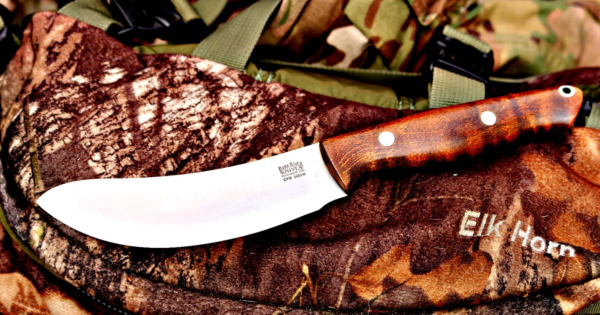
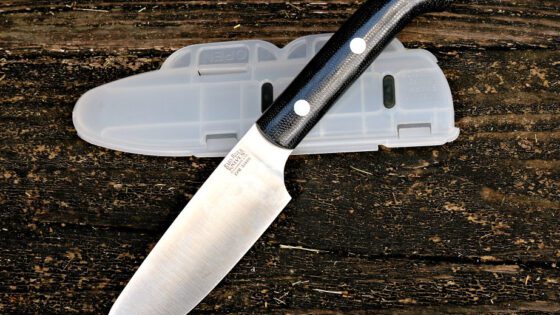
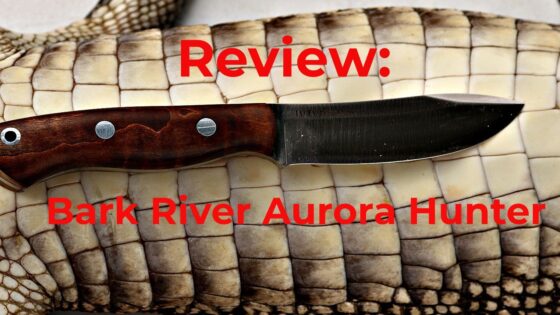
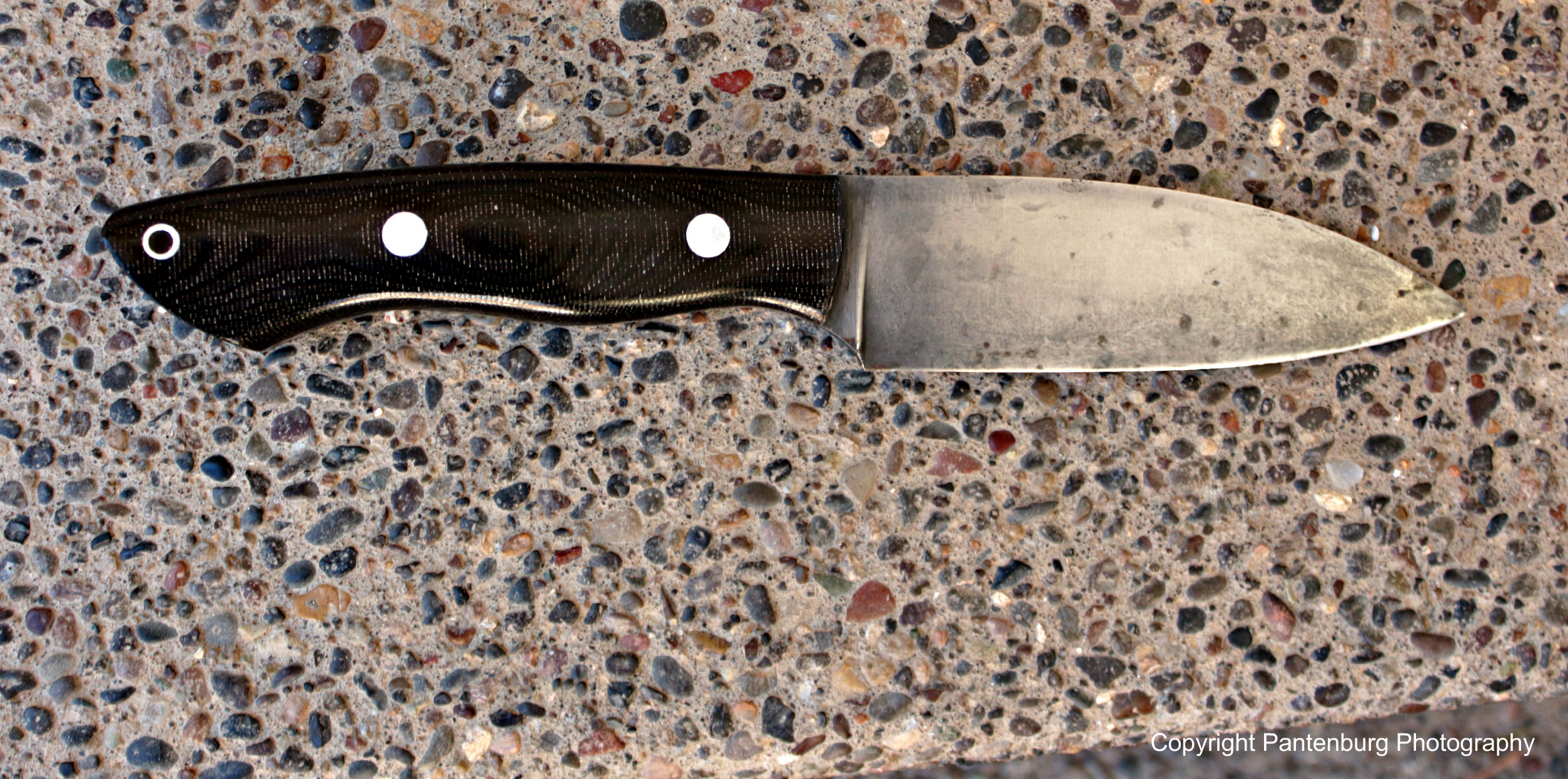
Leave a Reply